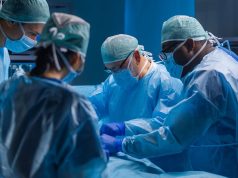Establishing donor-to-recipient cross-circulation feasible for avoiding brain ischemia during surgery
FRIDAY, July 24, 2015 (HealthDay News) — The mouse model of allo-head and body reconstruction (AHBR) is feasible for avoiding brain ischemia during transplantation, according to a study published in the August issue of CNS Neuroscience & Therapeutics.
The mouse model of AHBR has been established to further the clinical development of this strategy for patients who are suffering from mortal bodily trauma or disease, yet whose mind remains healthy. With this in mind, Xiao-Ping Ren, M.D., from The Second Affiliated Hospital of Harbin Medical University in China, and colleagues examined the next steps through the model.
The researchers note that by establishing donor-to-recipient cross-circulation by cannulating and anastomosing the carotid artery on one side of the body and the jugular vein on the other side, the approach retained adequate blood perfusion in the transplanted head. This strategy preserved neurological function, as demonstrated by electroencephalogram and intact cranial nerve reflexes.
“In conclusion, our short-term results with this model are inspiring,” the authors write. “The experimental method that we have described can allow for long-term survival, and thus assessment of transplant rejection and central nervous system recovery, bringing us one step closer to AHBR in man.”
Copyright © 2015 HealthDay. All rights reserved.








